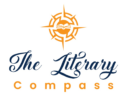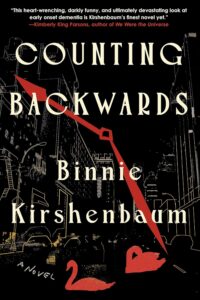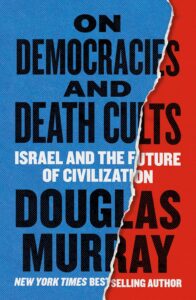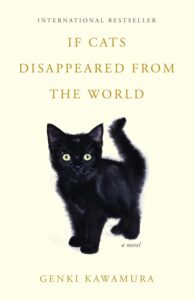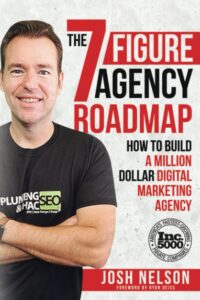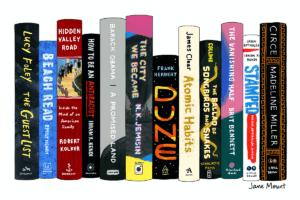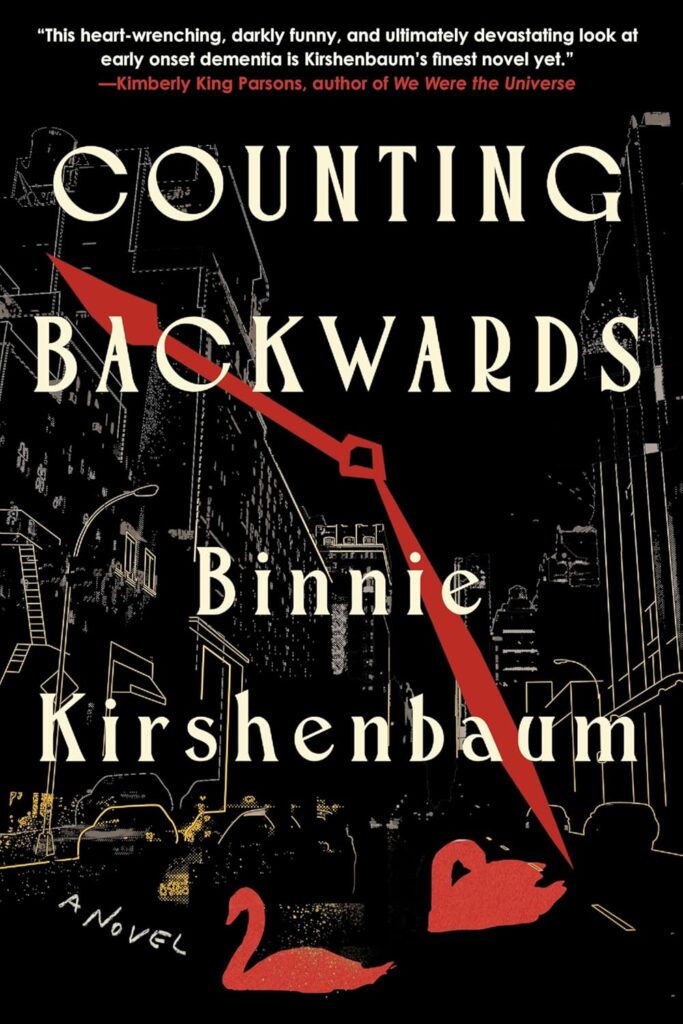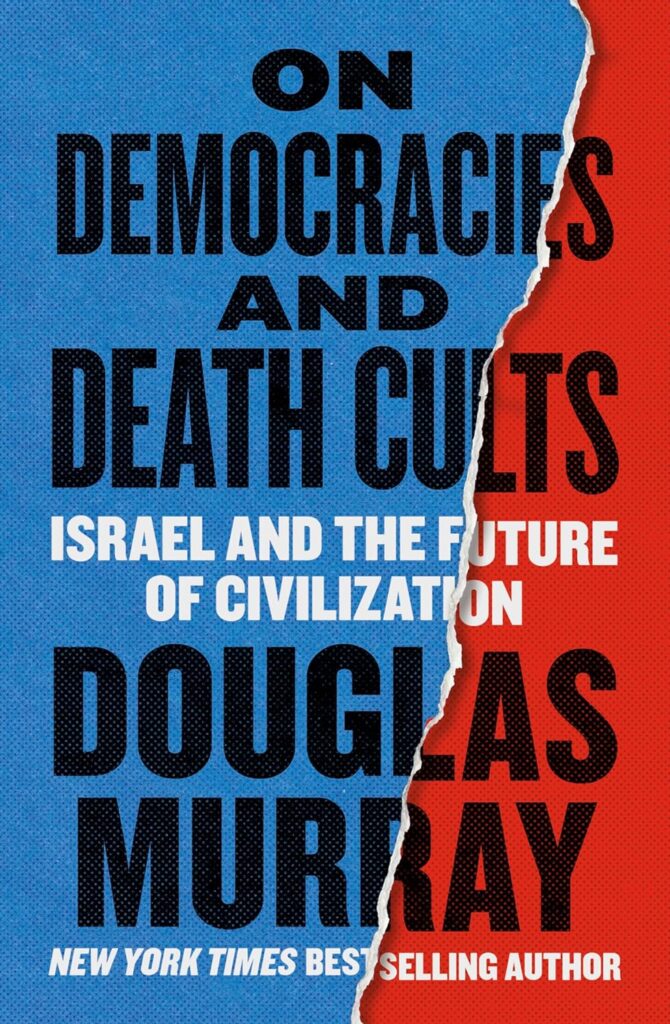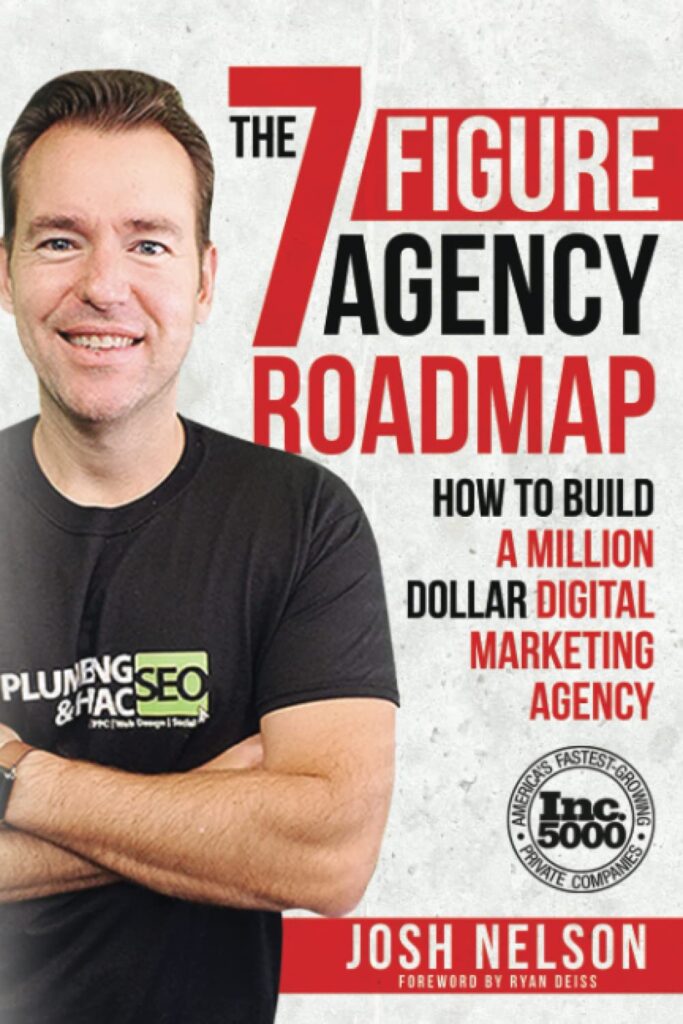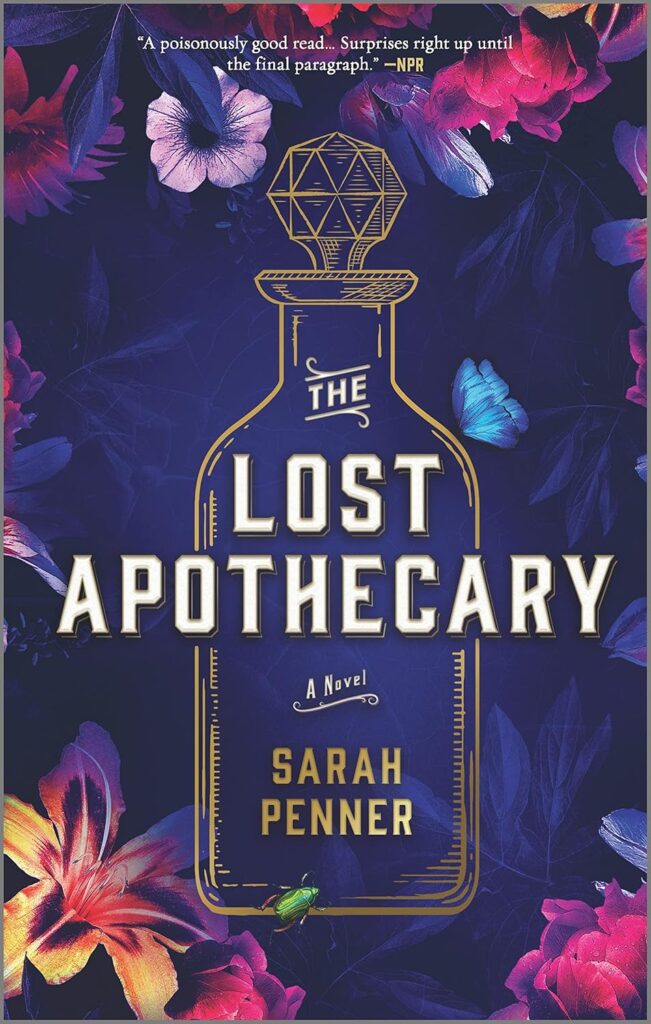Imagine standing before row after row of books in a busy bookstore—every spine a promise, every title a question mark. You’ve read thrillers, dipped into historical epics and dipped again into speculative worlds, yet something always feels slightly off. How do you pin down exactly what you’ll enjoy next?
Knowing a book’s genre does more than narrow your search. It sets expectations for pacing, tone, and themes; it points you toward similar titles; and it gives you the right vocabulary to recommend reads to fellow book lovers. Whether you crave sneaky plot twists, sweeping romances, or worlds brimming with magic, understanding genre transforms indecision into confidence.
In this guide, you’ll walk through a 13-step framework that blends:
- Self-reflection exercises to uncover your reading habits
- Structural analysis techniques for plot, setting, and character
- Expert resources—like Oregon State University’s “What Is a Genre?” overview—and solid academic tools
Along the way, we’ll use clear examples from well-known books, offer hands-on activities to fine-tune your instincts, and point you to authoritative links so you can dig deeper. By the end, you won’t just guess a genre—you’ll articulate it with precision, whether you’re browsing at an independent shop or leading your next book club discussion.
Ready to navigate the shelves with purpose? Let’s get started.
Step 1: Define What Genre Means in Literature
Genre is more than a label on a book spine—it’s a set of shared conventions that shape how a story unfolds and how you, the reader, experience it. Academically speaking, a genre organizes literature by common elements in form, style, and subject matter. Over time, authors lean into—or intentionally subvert—these conventions because readers come to expect certain rhythms, themes, or character types. Think of the word “mystery”: you anticipate puzzles, clues, and a sleuth chasing down answers. Say “fantasy”, and a world of magic, mythical creatures, and epic quests springs to mind.
These recurring features don’t emerge overnight. They develop as writers and audiences interact, building a feedback loop of expectation. When enough works share similar structures—chapters that end on cliffhangers, a hooded figure lurking in the shadows, or a prophecy that drives the plot—they coalesce into a recognizable category. And that category is your roadmap: it tells you what sort of narrative journey awaits.
For a more thorough look at the origins and academic underpinnings of genre, see Oregon State University’s “What is a Genre?”.
What Constitutes a Genre: Form, Style, and Subject
At its core, each genre carries three pillars:
- Form: How the work is built. Is it divided into chapters, stanzas, or acts? Does it follow a verse novel structure, blending poetry with prose?
- Style: The author’s voice and tone. Does the prose favor terse, staccato sentences like a thriller, or lush, descriptive passages as in historical epics?
- Subject: The themes and topics. Are you diving into high-stakes investigations, magical realms, or explorations of everyday life?
Genres can—and often do—blend. A verse novel, for instance, uses poetic form to deliver a narrative you might normally expect in prose. Likewise, a romantic mystery stitches together the emotional beats of love with the suspense of a whodunit. Recognizing these pillars helps you see how different elements coalesce into a coherent reading experience.
Distinguishing Genre from Medium and Format
It’s easy to blur genre with medium or format, but they aren’t the same. Medium refers to how a story is delivered—print, audiobook, film, or podcast—while format touches on the structural presentation, like prose versus verse. A horror novel and a horror film share a genre: jump scares, eerie atmospheres, and protagonists facing looming dread. But one speaks in written words, the other in visuals and soundtracks.
Consider the superhero story: whether it’s a graphic novel, a novelization, or a blockbuster movie, the genre traits—masked heroes, an arch-nemesis, and action-packed showdowns—remain the same. What changes is your mode of engagement, not the core conventions that define the tale. By keeping genre distinct from medium and format, you’ll sharpen your ability to identify what makes a story fit into a particular category, no matter how you consume it.
Step 2: Reflect on Your Personal Reading Preferences
Before you dive back onto the shelves, take a moment to look inward. Your reading history is a treasure trove of clues about the genres that truly resonate with you. By auditing what you’ve loved—and why—you’ll uncover patterns in tone, pacing, setting, and theme that point straight to your instinctive genre affinities. Grab a notebook or open a fresh spreadsheet and get ready to play detective on your own bookshelf. For more on matching your interests to genre, check out Writing Mastery’s guide to understanding book genres.
Inventory Your Favorite Titles and Core Traits
Start by listing 5–10 of your all-time favorite reads. For each one, jot down:
- Title and author
- The emotional hook (What made you care? Fear, nostalgia, curiosity?)
- The pacing or narrative rhythm (breakneck thrills, leisurely world-building?)
- The setting (cozy village, sprawling metropolis, alternate reality?)
- Any standout stylistic notes (first-person intimacy, playful dialogue, lush description)
Example entry:
- The Da Vinci Code by Dan Brown
- Emotional hook: fast-paced puzzles and cryptic clues
- Pacing: short chapters that end on cliffhangers
- Setting: international tour of historic sites
- Style: third-person, journalistic tone
This inventory doesn’t have to be exhaustive—its goal is to capture what made each book click for you.
Spotting Patterns in Your Reading History
Once you’ve laid out your entries, step back and look for recurring elements. Ask yourself:
- Do you gravitate toward specific settings (urban noir, high-fantasy realms, small-town coziness)?
- Are there common conflicts driving the plots (man vs. nature, detective vs. criminal, lovers vs. society)?
- Does the pacing tend to be relentless or contemplative?
- Which moods keep popping up (eerie, whimsical, introspective)?
A simple table or color-coded spreadsheet can help you visualize these patterns:
| Book Title | Setting | Conflict Type | Pacing | Mood |
|---|---|---|---|---|
| The Da Vinci Code | Europe | Man vs. Mystery | Fast | Suspenseful |
| The Name of the Wind | Fantasy world | Man vs. Society | Moderate | Epic |
| Eleanor Oliphant Is | Modern city | Man vs. Self | Steady | Wry, hopeful |
By spotting clusters—say, multiple titles with brisk pacing and puzzle-driven plots—you’ll start to see your natural genre sweet spots. This self-audit transforms vague preferences into concrete data you can use in the next steps of your genre-identification journey.
Step 3: Determine the Target Audience and Age Category
A book’s target audience isn’t just a marketing blurb—it shapes voice, theme, and even pacing. By identifying the age category your story (or the book on the shelf) is aimed at, you’ll gain clarity on everything from narrative voice to the maturity of its themes. Age brackets—from Middle Grade to Adult—come with unspoken agreements about protagonist journeys, emotional arcs, and content boundaries.
Many publishers and libraries sort titles by reader age so families, schools, and booksellers can quickly find the right fit. Use the same categories to reverse-engineer a book’s intended audience: note the protagonist’s life stage, the complexity of conflict, and the nature of relationships to slot any title into a familiar bracket. For a deeper dive on aligning age categories and protagonist traits, see Alyssa Matesic’s guide on age categories and protagonist alignment.
Aligning Protagonist Age with Reader Expectations
The age of your main character often mirrors the reader’s own perspective, building empathy and making conflicts feel immediate.
- Note the protagonist’s age or life stage. Are they navigating school friendships or first heartbreak?
- Observe theme maturity. Younger protagonists tend to face external challenges (classroom rivalries, family moves); older ones grapple with identity crises, career choices, or moral dilemmas.
- Match narrative voice to worldview. A tween narrator may use simpler descriptions; an adult narrator might offer reflective commentary or complex inner monologue.
By auditing these traits, you’ll see why a detective aged 10 fits snugly in Middle Grade, whereas a 25-year-old journalist questioning her career could land in New Adult or Adult fiction.
Comparing Middle Grade, YA, New Adult, and Adult
Below is a snapshot of the four main age categories, with their typical themes, tone, and a familiar example for each:
| Category | Age Range | Themes | Tone | Sample Titles |
|---|---|---|---|---|
| Middle Grade | 8–12 | Friendship, discovery, courage | Light to hopeful | “Harry Potter and the Sorcerer’s Stone” by J.K. Rowling |
| Young Adult (YA) | 12–18 | Identity, rebellion, romance | Emotional intensity | “The Hunger Games” by Suzanne Collins |
| New Adult | 18–30 | Self-discovery, first love | Introspective, raw | “Normal People” by Sally Rooney |
| Adult | 18+ | Complex relationships, purpose | Nuanced, varied | “The Goldfinch” by Donna Tartt |
These categories are guidelines, not ironclad rules. Readers often cross age brackets, but this framework helps you pinpoint a story’s core audience—and the expectations that come with it.
Step 4: Analyze Plot Structure and Pacing
Every story follows a blueprint of events that guide the reader from first page to last. By mapping out a narrative arc—setup, inciting incident, rising action, climax, and resolution—you can see the mechanics beneath any genre. Plot structure reveals not only what happens, but when it happens. Pacing, meanwhile, dictates how quickly those beats unfold and how much room the author gives you to catch your breath. A thriller might pepper in cliffhangers every other chapter, while a literary novel lets scenes linger, soaking in detail and mood.
To get started, sketch your book’s arc on a timeline:
- Setup: Introduce characters, setting, and central tension
- Inciting Incident: The event that launches the story’s main conflict
- Rising Action: A series of obstacles that escalate stakes
- Climax: The turning point where tensions peak
- Resolution: Loose ends tie up, themes resolve or evolve
Once you’ve plotted these milestones, look at how the author uses chapter breaks, scene length, and narrative focus to control momentum. That analysis will highlight genre fingerprints: breakneck urgency in a mystery or a gentle unfolding of character in a family saga.
Identifying Key Plot Points and Conflict Types
Conflict lies at the heart of every genre. Recognizing which type drives the story helps you nail down its category:
- Protagonist vs. Antagonist: A detective hunting a serial criminal (e.g., crime novels)
- Protagonist vs. Self: Internal struggle over guilt or identity (common in literary and psychological fiction)
- Protagonist vs. Society: A rebel challenging oppressive systems (dystopian or social justice–driven narratives)
- Protagonist vs. Nature: Survival tales against environmental forces (adventure or eco-fiction)
- Protagonist vs. Supernatural: Battles with otherworldly beings or magic systems (horror, fantasy)
For instance, a classic cat-and-mouse chase between sleuth and villain signals mystery or thriller, whereas a hero wrestling with forbidden powers points toward fantasy. Jot down the central conflict to see where it aligns on the genre spectrum.
Evaluating Pacing and Narrative Rhythm
With your plot points in place, chart when key events occur—perhaps on a simple grid or by annotating chapter numbers. Ask:
- Are major revelations front-loaded or do they simmer beneath the surface?
- Do scenes wrap up quickly, or linger over setting and introspection?
- How often does tension spike, and what follows those peaks?
Genre patterns often emerge here. Horror might shock you early with a sudden scare, then space out moments of dread to keep you off-balance. Romance typically builds emotional tension more gradually, deepening intimacy before delivering its climactic embrace. By timing those beats against your arc, you’ll see how pacing shapes reader expectations—and which genre conventions an author leans on to hold your attention.
Step 5: Examine the Setting and World-Building
A book’s setting isn’t just a backdrop—it’s a signpost to its genre. Whether a story unfolds in a gritty 1920s alley or on the rim of a distant planet, details about time, place, and culture shape the narrative palette. Historical fiction often delights in authentic period trappings—corsets, gaslight, and class divides—while science fiction and fantasy hinge on creative world-building, from advanced AIs to intricate magic systems. By paying close attention to era, geography, and societal norms, you’ll spot the genre signals that guide your expectations and help you classify any title.
When you settle into a new novel, ask yourself: does the prose lean on real-world historical events or gloss over them entirely? Are new technologies portrayed as plausible extrapolations of today’s gadgets, or do they break every rule of physics? Does the author sketch out social hierarchies and rituals that feel drawn from our own world, or do they invent entirely fresh cultures with their own customs and taboos? The more vivid and consistent the world, the stronger your genre clues will be—think of the rigid caste systems in dystopian YA or the sweeping dynasties of epic fantasy.
World-building also extends to everyday details: food, clothing, speech patterns, even laws. A detective novel set in Prohibition-era Chicago will evoke smoky speakeasies and bootleggers, while a space opera might describe starship corridors and neural interfaces. These elements work together like a fingerprint, telling you not only what kind of story you’re reading, but why it feels compelling in that genre’s unique way.
By examining setting and world-building, you’ll move closer to confidently answering “how to identify a genre” for any book. Let’s break this down further into two practical steps.
Noting Time Period, Location, and Cultural Context
Start by listing the novel’s temporal and geographical markers:
- Era or year: Victorian London, post–World War II Paris, 23rd-century Mars
- Physical environment: urban sprawl, pastoral countryside, alien jungle
- Social backdrop: rigid class system, corporate surveillance state, matriarchal clan structure
Example: A story set in 19th-century Scotland with superstitious villagers hints at gothic or historical romance, whereas a tale that unfolds in a near-future megacity under curfew signals dystopian sci-fi.
Assessing Speculative Elements and World Rules
Next, zero in on any departures from our reality:
- Technology or magic: Are there flying cars, biotech implants, or elemental spells?
- World rules: What boundaries govern this universe? Is time travel allowed? Do gods walk among mortals?
- Alternate history or future: Has a key historical event shifted? Does society function on radically different ideals?
Example: A novel that outlines strict magic laws—no one can cast spells after sunset—leans into fantasy. One that describes real-world cities repurposed under an authoritarian regime falls under speculative or dystopian fiction. By mapping these speculative elements, you’ll sharpen your genre radar and know exactly what category to assign.
Step 6: Identify Main Characters and Archetypal Roles
Characters don’t just drive a plot—they also act as signposts to a story’s genre. From the stoic detective prowling foggy streets to the reluctant chosen one in an enchanted kingdom, archetypal roles carry expectations ingrained in readers. By mapping out who your protagonists and side characters represent, you’ll uncover another layer of genre cues. Grab a sheet of paper (or a digital note) and list your book’s main cast—then see which familiar role each one fills.
Recognizing Genre-Specific Archetypes
Certain character molds recur so often they’ve become shorthand for their genres. Here are a few archetypes to watch for:
- Final Girl (Horror): The lone survivor who confronts the monster or killer
- Femme Fatale (Noir/Thriller): A seductive figure whose loyalties—and dangers—are never quite clear
- Mentor (Fantasy): The wizened guide who imparts secret knowledge or magical training
- Chosen One (YA/Dystopian): A seemingly ordinary hero fated to upend a corrupt system
- Anti-Hero (Literary/Crime): A morally ambiguous lead whose flaws drive the narrative
Example: In Suzanne Collins’s The Hunger Games, Katniss Everdeen embodies the Chosen One. She starts as a survival-driven teenager but gradually shoulders the weight of rebellion, signaling the dystopian framework.
Analyzing Character Motivations and Relationships
Beyond roles, what characters want—and whom they trust or betray—reveals genre orientation:
- Revenge (Thriller): A protagonist haunted by past wrongs, stalking clues or enemies until justice—or vengeance—is served
- Redemption (Literary Fiction): A character wrestling with guilt, seeking forgiveness through introspection and personal growth
- Survival (Adventure/Science Fiction): Individuals pushed to extremes by hostile environments or alien threats
- Forbidden Love (Romance): Two lovers whose union defies social norms, creating emotional stakes
Try this quick exercise: pair each main character with their driving motivation (e.g., “Detective Lina – vengeance for a lost partner”). Then note how their relationships evolve—is it trust built on shared trauma (common in post-apocalyptic tales) or misdirection born of hidden agendas (a staple in spy thrillers)? Chart these motivations side by side to see which genre’s emotional engine powers the story.
By identifying both archetypal roles and the deeper motives that drive them, you’ll sharpen your sense of a book’s genre identity—and gain fresh insight into why certain characters feel so irresistible in their familiar roles.
Step 7: Recognize Mood, Tone, and Language Style
Every genre carries its own emotional signature. Mood—how a text makes you feel—sets the atmosphere, while tone reflects the narrator’s or characters’ attitude. Language style, from sentence structure to vocabulary, reinforces those feelings and clues you into genre conventions. By tuning into these elements, you’ll pick up on subtle signals that point directly to what kind of story you’re reading.
Authors choose words deliberately: a thriller relies on sharp, clipped sentences to ratchet up tension, whereas a historical epic luxuriates in sprawling descriptions of landscapes and costumes. Even the rhythm of dialogue—how often characters interrupt one another or the level of formality they employ—can nod toward one genre or another. Learning to read between the lines of word choice and narrative voice gives you another powerful tool in your toolkit for how to identify a genre.
Matching Tone and Mood to Genre Expectations
Start by cataloging mood and tone words as you read. Ask yourself: does the prose feel ominous or playful? Is the narrator skeptical or earnest? Here are a few mood descriptors to watch for:
- Eerie, foreboding, chilling
- Whimsical, lighthearted, quirky
- Contemplative, introspective, reflective
- Satirical, irreverent, biting
Example: A YA contemporary novel often adopts a first-person, conversational tone—intimate and self-aware—inviting readers into a teenager’s internal dialogue. In contrast, a gothic horror might employ third-person narration that lingers on shadowy details, building an unsettling mood through deliberate pacing and vivid imagery.
Identifying Stylistic Hallmarks: Prose and Dialogue
Beyond mood, certain stylistic traits become shorthand for a genre:
- Sentence length and structure: Short, staccato lines keep the heart pounding in a thriller; long, winding sentences encourage immersion in a literary novel or epic fantasy.
- Vocabulary and diction: Period-appropriate words and formal speech signal historical fiction; modern slang and colloquialisms anchor a story in the present day or in YA.
- Dialogue patterns: Rapid-fire exchanges with interruptions can heighten suspense in a crime drama; measured, poetic dialogue suits a romance or high fantasy.
- Chapter breaks and section headings: Quick turns to commercial readers in mysteries; thematic divisions in literary fiction or essays.
Example: In a courtroom drama, you might notice formal legal jargon and precise, logical phrasing. That level of technical language not only grounds the narrative in its legal setting but also flags the legal thriller genre. Spotting these stylistic fingerprints helps you confidently differentiate, say, a police procedural from a sci-fi adventure—even before the big reveal.
By honing in on mood, tone, and language style, you’ll add another layer to your genre-identification process. These subtleties often reveal an author’s intentions before the plot even fully unfolds, making you a more perceptive reader and genre sleuth.
Step 8: Map Out Genre Conventions, Themes, and Tropes
By this point, you’ve dissected plot, setting, characters, and style. Now it’s time to catalog the building blocks that show up again and again in each genre—its conventions and tropes—and connect those recurring motifs to the deeper themes that give stories their emotional weight. Think of conventions as the structural patterns you expect (a final girl in horror, an epic quest in fantasy) and tropes as familiar plot or character motifs (the love triangle, the unreliable narrator). Together, they form a genre’s fingerprint.
Start by creating two lists:
- Conventions: How the story is organized and progresses
- Tropes: Recurring devices—characters, plot twists, settings—that resonate with readers
Mapping these elements side by side not only confirms your genre hunch but also sharpens your awareness of how authors play with or subvert reader expectations.
Cataloging Common Tropes by Genre
A simple way to see genre at a glance is to build a trope matrix. List a handful of genres, then note three hallmark tropes for each. Here’s a starter example:
| Genre | Top 3 Tropes |
|---|---|
| Romance | Meet-cute, love triangle, happily ever after |
| Mystery/Thriller | Red herrings, locked-room scenario, twist ending |
| Fantasy | Chosen one, magic school, medieval kingdom |
| Horror | Final girl, haunted house, creeping dread |
| Science Fiction | Dystopian society, AI rebellion, space opera |
How to use this table:
- When you spot two or three of these tropes in a novel, it’s a strong clue to its genre.
- If an author leans heavily on these tropes—but then flips one on its head—you might be looking at a subgenre or a tropes-at-play narrative.
Feel free to expand the matrix for subgenres too (e.g., “historical romance” or “psychological thriller”) and add columns for additional tropes you encounter.
Analyzing Core Themes and Symbolic Patterns
Tropes often point to the mechanical “what” of a story; themes reveal its emotional “why.” Underneath every convention and cliché lie universal ideas—justice, transformation, forbidden love—that resonate across narratives. Identifying these themes ties your trope catalog back to the heart of each genre.
Try this quick exercise:
- List the central tropes you identified.
- Ask: What core theme does each trope highlight?
Example:
- In a coming-of-age novel, repeated scenes of mentors offering advice underscore the theme of transformation.
- In a dystopian tale, the trope of “rebellion against the regime” points to themes of freedom and sacrifice.
- In gothic literature, the overgrown castle and hidden family secrets evoke themes of decay and the uncanny.
By pairing each trope with its thematic counterpart, you’ll see how genres not only entertain us but also explore timeless questions. This deeper layer of analysis confirms your genre identification and enriches your reading experience, transforming you from a passive consumer into an insightful genre sleuth.
Step 9: Consult Authoritative Genre Guides for Confirmation
By now you’ve assembled evidence from your own reading habits, plot analysis, and trope mapping—but it never hurts to get a second opinion. Heading to established genre compendiums helps you verify your findings, uncover sub-genres you might have missed, and ensure your classification lines up with industry standards. Think of these guides as a reality check: they’re quick reference points that distill decades of publishing wisdom into neat definitions and lists.
Before you finalize your genre label, pull up a couple of trusted resources. Compare how they define main genres, see where your book slots in among the sub-categories, and note any conventions they highlight that you hadn’t considered. This step not only boosts your confidence but also prepares you to talk the same language as booksellers, librarians, and editors.
Using Written Word Media’s Genre Guide for Definitions
The Written Word Media’s genre guide is a great place to start. It breaks down broad categories—like mystery, romance, fantasy—into bite-sized descriptions and offers clear sub-genre lists underneath each heading. To use it:
- Scan the main genre headings to find the closest match to your story’s core elements.
- Drill into the sub-genre section (for example, “cozy mystery” versus “psychological thriller”) and read the short definitions.
- Compare those definitions with your own notes on pacing, setting, and character. If the guide’s description of “urban fantasy” mentions hidden magic in a contemporary cityscape, that might confirm your hunch or point you toward a more precise label.
Exploring Genre Influence on Publishing and Marketing
Knowing how a genre is defined isn’t just academic—it shapes everything from cover design to shelf placement. The Decoding Book Genres guide from Writers Digest Online walks you through how publishers use genre tags to target readers. You’ll learn:
- How cover art, fonts, and color palettes signal genre expectations
- Why metadata and keyword tags matter for online discoverability
- How blurbs and category placement influence a book’s marketing strategy
Use this guide to see whether your classification aligns with how the industry will package and promote the title. If your romance novel has darker themes and the guide flags “romantic suspense” as a distinct market, you might adjust your label accordingly. This final confirmation ensures your genre choice resonates both with readers and with the business of books.
Step 10: Explore Library of Congress Classification for Structural Insights
If you’ve ever wandered the stacks of a public or university library, you’ve seen how books are grouped by call numbers rather than by spine stickers. Those alphanumeric codes are part of the Library of Congress Classification (LCC) system, a universal framework that arranges works by subject—even down to specific literary genres. Learning to read these labels gives you a bird’s-eye view of how libraries categorize literature, so you can use call numbers as another clue to a book’s genre. To get started, check out the Library of Congress Classification overview.
Understanding the LCC Hierarchy for Literature
Under LCC, Class P covers language and literature, and it’s divided into subclasses that break down by geography, language, and form. Here’s a quick rundown of the most relevant sections for fiction and poetry:
- PN – General literature: theory, literary history, and collections of drama, poetry, or fiction that don’t fit national categories.
- PR – English literature: works by authors from the UK and Commonwealth.
- PS – American literature: novels, poetry, and drama by U.S. authors.
- PQ – Romance literatures: French, Italian, Spanish, and Portuguese works.
- PZ – Juvenile belles lettres: children’s and young adult fiction.
When you spot a call number starting with PS 3553 (for example), you know you’re in the heart of American fiction, whereas PZ 7 suggests Middle Grade or YA tales. This hierarchy points you straight to shelves where specific genres and age categories live side by side.
Leveraging Call Numbers to Navigate Genre Sections
You can also harness online catalogs to search by call number as easily as by author or title. Try entering “PN 1993” to pull up general drama, or “PS 3552” for mid-20th-century American mystery and crime novels. If you spot a range—say, PS 3555–PS 3560—it often corresponds to popular genre clusters like thrillers or historical fiction within American literature. For juvenile titles, browse PZ by tens (PZ 7.x for picture books, PZ 7.1–7.5 for MG, PZ 7.6–7.8 for YA). By familiarizing yourself with these prefixes, you’ll quickly zero in on the exact shelves—virtual or physical—where your favorite genre lives.
Step 11: Apply Academic Literary Frameworks and Technical Terms
At this point, you’ve gathered a wealth of observations—from plot structure to character archetypes and tropes. To sharpen your genre analysis even further, it’s time to bring in the critical vocabulary and scholarly concepts that literature students and professional reviewers use. Adopting these terms makes your notes more precise, helps in communicating your findings, and even uncovers latent genre signals you might have missed.
By weaving academic frameworks into your process, you’ll not only identify a genre more confidently but also gain insight into how stories function under the surface. Whether you’re drafting a review, guiding a book club, or simply satisfying your own curiosity, these technical tools add depth to your understanding.
Differentiating Narrative Prose, Poetry, and Drama
A key step in formal literary analysis is distinguishing between major modes of storytelling: prose, poetry, and drama. Each mode carries its own set of conventions—and these conventions often overlap with genre expectations.
- Prose narratives unfold in paragraphs and chapters, with a focus on exposition, dialogue, and direct storytelling. Most novels—whether they’re thrillers, romances, or historical sagas—fall into this category.
- Poetry relies on line breaks, meter, rhyme, and figurative language. Even when it tells a story (as in the verse novel), its structural emphasis on stanzas and sonic patterns signals a poetic genre.
- Drama is composed for performance. Look for acts, scenes, stage directions, and heightened dialogue. It’s not just theater scripts; dramatic elements can surface in any narrative that foregrounds dialogue as action.
For a deeper dive into these distinctions and a glossary of related terms, explore Purdue OWL’s literary terms index. As you compare a novel’s chapter headings to a poem’s stanzas or a play’s acts, you’ll find genre cues hiding in plain sight.
Employing Literary Terms to Enhance Your Classification
Once you’re fluent in mode distinctions, layer on additional literary terms that spotlight genre conventions. Here are a few to keep at your fingertips:
- Motif: A recurring image or idea that supports a genre’s mood. In gothic fiction, you might find motifs of decay (crumbling estates, wilting flowers).
- Allegory: A story in which characters and events symbolize broader themes. Perfect for dystopian fiction, where settings and plots often stand in for real-world critiques.
- Foreshadowing: Hints or clues about future events. Thrillers and mysteries frequently use this to build suspense.
- Unreliable Narrator: A narrator whose credibility is compromised by bias or deception. Common in psychological thrillers and postmodern literary fiction.
As you read, highlight passages illustrating these terms. For instance, italicized flashback sequences can serve as foreshadowing; metaphor-laden descriptions of shadows might function as a gothic motif. Over time, you’ll notice that certain terms cluster around specific genres, providing an academic stamp on your classification.
By integrating these frameworks and terms into your notes—whether in margin scribbles or a digital spreadsheet—you transform a simple genre guess into a rigorous, evidence-backed analysis. And that level of detail not only impresses fellow bibliophiles but also deepens your own appreciation for the craft of storytelling.
Step 12: Validate Your Genre Classification with Checklists and Peer Feedback
By now you’ve compiled a detailed profile—plot, setting, characters, tone, tropes—all pointing toward one or more genres. Before you commit to a label, it pays to run your analysis through a formal checklist and get fresh eyes on your findings. Systematic questions help you spot gaps or assumptions, while feedback from other readers can reveal blind spots and unexpected insights. Here’s how to zero in on a solid classification.
Working Through a Genre Identification Checklist
Using a structured checklist turns intuition into evidence. The “Checklist for Identifying & Analyzing Genres” from Pressbooks lays out key questions about purpose, audience, style, and conventions. To make the most of it:
- Download or print the checklist from Pressbooks (look for “Essentials for ENGL-121: Checklist for Identifying & Analyzing Genres”).
- For each section—Rhetorical Situation, Conventions, Style, Design, Sources—answer every question based on your book notes.
- Purpose: What is the author trying to achieve (inform, entertain, persuade)?
- Audience: Who is this for, and how can you tell from language or pacing?
- Conventions: Which genre patterns show up (cliffhangers, love triangles, world rules)?
- Style and Design: How do sentence structure, chapter breaks, and visuals (if any) reinforce the genre?
- Highlight any “No” or “Unsure” responses. Those are areas to revisit—maybe you missed a trope, or the tone straddles two categories.
- Compare your completed checklist to your earlier notes. A strong match across all sections confirms your genre choice; mixed signals might suggest a cross-genre or a sub-genre label.
This exercise not only validates your hunch, it trains you to think like a librarian or editor who relies on similar frameworks every day.
Gathering Insights from Beta Readers and Online Communities
Checklists catch logical gaps; people catch instinctive ones. Sharing your analysis with fellow readers or writers can turn personal biases into productive discussion. Try these approaches:
- Book clubs and writing groups
• Present a brief synopsis—no genre label—and ask members to guess the genre.
• Collect written feedback on what elements stood out: pacing, character roles, setting cues. - Beta reader surveys
• Create a short questionnaire (Google Forms works well) with multiple-choice and open-ended questions about tone, conflict type, and tropes.
• Send it to 3–5 trusted readers; aggregate the responses to see majority opinions. - Online forums
• Post an excerpt or plot summary on Goodreads groups like “What Are You Reading?” or Reddit’s r/writing and r/booksuggestions.
• Ask, “Based on this snippet, what genre would you file it under?” Notice which labels recur.
When you gather these insights, look for consensus. If most peers call your book a “psychological thriller” but you’ve been leaning toward “literary suspense,” dig into what motivated their choice—tone, narrative voice, or conflict focus. Often, this feedback is the nudge that sharpens your final label, ensuring your genre classification rings true to readers and fits neatly onto any bookshelf or online store.
Step 13: Synthesize Your Findings to Assign a Final Genre Label
Now that you’ve dove into every layer—plot, setting, characters, tone, tropes and even library call numbers—it’s time to bring all your observations together and choose a clear genre label. Think of this as assembling a puzzle: each step has given you a piece, and when you interlock them you’ll see the full picture. To do this, collect your notes into a simple rubric or decision tree, weigh the most defining features, and then pick the label (or labels) that best match.
One practical method is a scoring rubric. List your top five genre indicators—say, primary conflict type, pace, world-building strength, key tropes, and target audience—and give each a score from 1 (weak) to 5 (strong) for every genre you’re considering. Total the scores to see which genre comes out on top. For example:
| Indicator | Mystery | Fantasy | Romance |
|---|---|---|---|
| Conflict (whodunit) | 5 | 1 | 2 |
| World-building depth | 2 | 5 | 1 |
| Romantic tension | 1 | 2 | 5 |
| Pacing (cliffhangers) | 5 | 3 | 2 |
| Intended audience | 4 | 3 | 4 |
| Total | 17 | 14 | 14 |
Here, “mystery” leads the pack. If two genres tie, consider which feature matters more to the core story—its driving force.
Weighing Conflicting Signals and Prioritizing Core Features
Sometimes your notes point in different directions. Maybe you spotted a magic system and a budding romance in almost equal measure. In such cases, decide which element drives the narrative:
- Identify the primary driver: What propels the plot? A murder investigation or an epic quest?
- Look at the emotional core: Is the heart of the story solving a puzzle, exploring forbidden love, or confronting societal collapse?
- Consider reader expectations: Would someone pick up this book hoping for clues and red herrings (mystery) or for a happily ever after (romance)?
If romance scenes are interwoven but not essential to the resolution, you might call it fantasy with romantic elements. Conversely, if the love story shapes every twist, opt for romantic fantasy.
Communicating Your Genre Choice Clearly
Once you’ve settled on a label, present it in the simplest, most informative way:
- Primary Genre (bold): the main category—Mystery, Urban Fantasy, Cozy Romance
- Secondary Tags (italic or comma-separated): subgenres or notable elements—historical, young adult, psychological
Example blurb:
“A cozy mystery set in a sleepy coastal town, with a dash of culinary intrigue and a determined amateur sleuth.”
When writing reviews, tagging online posts, or organizing your personal library, use this two-tier approach. It tells fellow readers exactly what to expect and helps booksellers or algorithms match your recommendation to the right audience.
By methodically synthesizing all the clues—your scores, narrative drivers, and reader expectations—you’ll finish this guide not only knowing how to identify a genre but also confidently assigning the perfect label. Happy sleuthing!
Wrap-Up and Next Steps for Aspiring Genre Sleuths
You’ve now navigated a comprehensive, 13-step path—from defining genre and reflecting on your reading habits to consulting authoritative guides and synthesizing your findings. Each exercise, whether it was mapping plot beats or scoring tropes, has given you a sharper eye for what makes a mystery tick or a romance bloom. Together, these steps form a toolkit that turns fuzzy impressions into precise genre labels, so you can browse shelves, recommend titles, or lead discussions with real confidence.
But becoming a deft genre sleuth isn’t a one-off quiz—it’s an ongoing practice. Keep testing your skills on books that challenge you: maybe a novel that blends historical drama with speculative twists or a thriller that tiptoes into horror. Revisit your rubric, compare notes against genre guides, and invite friends or fellow readers to play along. Over time, spotting genre signals will feel as intuitive as recognizing a familiar author’s voice.
Ready to take your curiosity further? Head back to The Literary Compass for fresh book recommendations, in-depth reading guides, and our AI-powered suggestion engine. Whether you’re tracking down the next cozy mystery, unearthing hidden fantasy gems, or diving into streams of literary fiction, our resources will keep you on course.
Now it’s your turn: grab a novel off the shelf, run it through your 13-step framework, and see where it lands. With each new book you analyze, you’ll fine-tune your instincts and solidify your understanding of how to identify a genre—transforming browsing into discovery, and reading into a rewarding detective game. Happy sleuthing!
